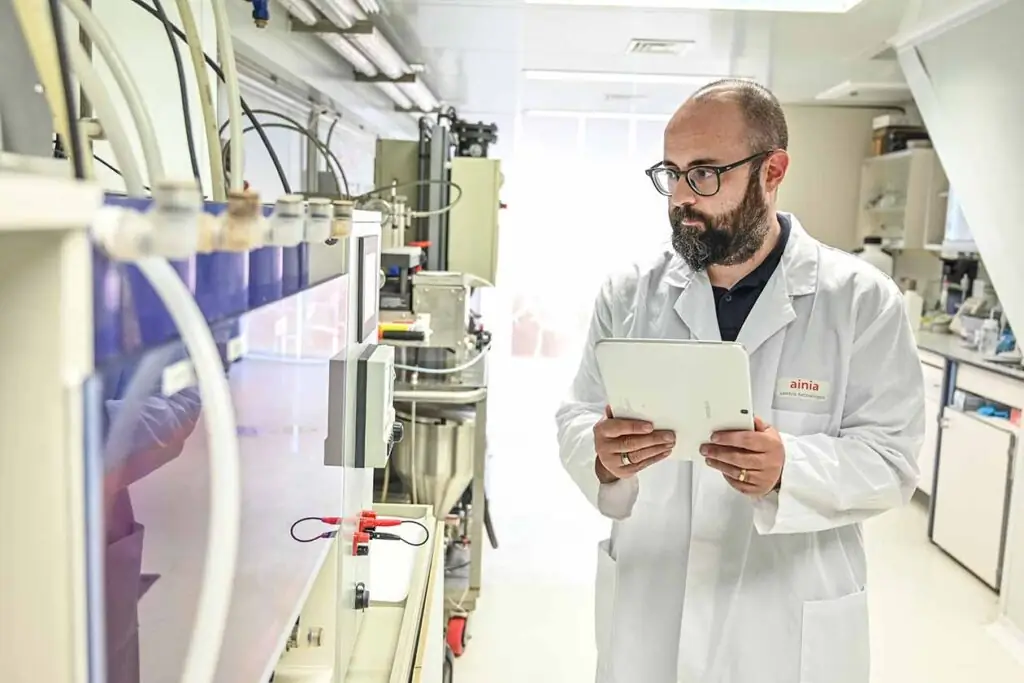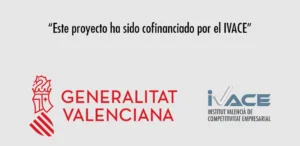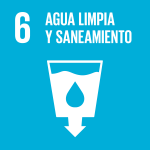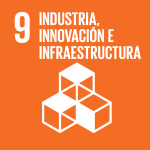The importance of comprehensive water management in the industry has been extensively analysed in recent years, whether in technological, hygienic-sanitary, environmental, social, or economic terms. Within this significance, the role of technology in the treatment of wastewater as a means to grant water a second useful life (or extend its lifecycle) is beyond doubt. We discuss the different strategies for the treatment of process water depending on the focus.
In terms of sustainability, this must involve three significant actions:
- Minimisation of water consumption in industrial activity.
- Purification of waste streams to reduce their environmental impact.
- Regeneration, disinfection, and recovery of wastewater for reuse.
But we often overlook an important point: to think about reusing that wastewater, such regeneration, recovery, and disinfection should be carried out according to quality criteria with the aim of turning this wastewater into process water, as covered under Royal Decree 1620/2007, of December 7, which establishes the legal regime for the reuse of treated water. This means that wastewater, just like catchment or supply water, must meet well-defined industrial quality parameters by process and industry in order to ensure the correct conduct of its activities and to avoid unpleasant surprises such as microbiological contamination, cross-contamination, scale, corrosion, and/or the deposition of unwanted compounds on susceptible elements like pipes, elbows, valves, tanks, measuring elements, and any type of conduits. This has very diverse effects depending on the industrial activity, but all translate into a decrease in the performance of the affected processes and, directly, in the company’s economy.
But let’s go back, what is process water?
Status of process water
The concept of process water can be defined as water that is used or involved in the productive activity of industry, including manufacturing processes (as an ingredient or raw material), treatment, preservation, as a transportation medium, energy generation (boilers, cooling, heat exchangers, or engines), cleaning and sanitization, and similar applications within the industry. Process water typically comes from the treatment of feed water or supply from network, underground, or surface sources.
Specifically for the food industry, process water could be identified as “all those waters used in the food industry for manufacturing, treatment, preservation, or marketing of products or substances intended for human consumption, as well as those used in cleaning surfaces, objects, and materials that may come into contact with food”, as stated in the text described in article 2.b of Royal Decree 140/2003, of 7 February, which establishes the sanitary criteria for the quality of drinking water.
Where does the complexity in strategies for treating process water lie?
The strategies for treating process water become more complex than those already present in the defined processes of treating wastewater generated that make up a wastewater treatment plant (WWTP), as it requires a meticulous characterization of the catchment or supply water that is desired to be conditioned as process water, as well as knowledge of the quality requirements necessary to achieve a quality water and satisfactorily complete its regeneration for reuse. Herein lies its difficulty and where two opposing strands of knowledge converge, such as regulatory and legislative to be clear on the steps to take and what our minimum objective is, and the technical related to existing technologies and processes that integrate our industry. Therefore, its enormous variability depending on the industrial sector and application within it leads to defining specific strategies for each type of water.
This truly represents a challenge for the existing technologies currently on the market and for those that are in the development phase (in a more research or academic environment), as they must adapt and evolve both in their industrial application and in their introduction into fields and sectors where previously they were not applied due to their efficiency or simply their utility was unknown. At this point, it is understood that the requirements and needs in the pharmaceutical industry are not and will not be the same as those required in the cosmetic, food, or petrochemical industries. Moreover, within the same industry and the same subsector, the water that acts as an ingredient in a product or raw material does not require the same quality as the water used in cleaning or rinsing, to give a simple example.
For conductivity: reverse osmosis, ion exchange adsorption, and electrodialysis.
If the focus is on the issue of conductivity, the process waters requiring very low conductivity will be made up of various processes where their main technology will be:
- Reverse osmosis (a membrane technology driven by a pressure gradient, highly efficient in desalination and water purification).
- Ion exchange adsorption (an adsorption technique where the compound or compounds of interest are retained by electrostatic attraction, used both for ionic purification of water and for obtaining high-value compounds in pharmaceuticals and the recovery of industrially significant heavy metals).
- Electrodialysis (a membrane technology that integrates concepts from the previously mentioned technologies, where the driving force for the separation of ionic compounds is an electrical gradient induced by an external electric field, mainly used for desalination and the neutralisation of very acidic or very alkaline streams, or even a combination of these with others to achieve the desired demineralisation).
This implies that not only is the technology important, but also the arrangement of pretreatments (conditioning to enhance performance) and the actual configuration of the main technology play a significant role in the treatment and adaptation of process water. The same water quality will not be obtained if it undergoes a single reverse osmosis step, if it works in series with more than one reverse osmosis module, if it works in a cascade or in a tree with different membranes and sizes, etc. For example, these demineralization processes tend to acidify the water, hence there should subsequently be a pH adjustment process to usage conditions (alkalinization) and supplier recommendations, as well as the introduction and/or addition of disinfection processes in case that treated water accumulates.
For the removal of organic matter: activated carbon adsorption processes
If the focus is on the elimination of organic matter present in that supply or catchment water, not only do membrane separation processes such as microfiltration, ultrafiltration, nanofiltration, and the previously mentioned reverse osmosis gain relevance, but another industrially interesting treatment in process waters are the activated carbon adsorption processes. These are very similar to ion exchange in concept, where selective separation of one or more components present in a gas or a liquid occurs through their accumulation on the surface of a microporous solid in solid state. This technology is particularly useful for retaining organic compounds that provide odour, taste, and colour in the water that passes through it, reducing their presence in the process water. Currently, the adsorbent material (activated carbon) is the most used, but the spectrum is opening to new materials where focus should be placed in the coming years such as activated alumina, zeolites, or metal-organic frameworks.
For disinfection: advanced oxidation technologies such as ozone or ultraviolet irradiation
If we delve further into disinfection beyond chlorination, advanced oxidation technologies like ozone or ultraviolet irradiation are very useful for conditioning washing waters and those used in boiler and cooling circuits, but their application and configuration must be carefully studied to achieve high performance.
This discussion summarises that the variability of technologies used in the treatment of this type of water to obtain a usable process water for the industry will depend on the physical and microbiological properties of the supply water, the volume of production, and the final quality required for its intended use.
Therefore, to complete the examples previously shown, here are some of the requirements needed for process water:
- Reduced conductivity, around µS/cm, to prevent corrosion issues.
- Very low hardness and alkalinity, to prevent the formation of deposits and precipitates in the installation components.
- Elimination of organic matter to minimize the risk of biofilm formation and biological contamination in equipment and surfaces.
- Use of demineralized water, and in very specific cases, ultrapure water.
Finally, the technologies aimed at treating process water must be scalable, adaptable, and versatile to the changing conditions of the supply water, including the intensification of existing processes and integration between processes leveraging their synergies to ensure the required quality. If your company is looking for efficient water use, we help you redesign the production processes with the mindset of avoiding “wastewater” and considering all generated liquid streams as a resource to be exploited.







